
38 minute read
Commencement
from A2 Fall 2020
June 8-9, 2020
This year’s Commencement festivities were like no other in recent history! It began on June 8 and 9 with Diploma Conferrals at The Albany Academy and Albany Academy for Girls. Each student and his or her family joined our Head of School, Board of Trustees President, and Associate Heads of School (all socially distancing) under a tent. On June 15 and 16 a pre-recorded video was shown of each Commencement ceremony at the Jericho Drive-in in Selkirk, NY. Although it was a challenging time for our seniors, the events were put together in a very thoughtful, personal, and professional manner.
Advertisement
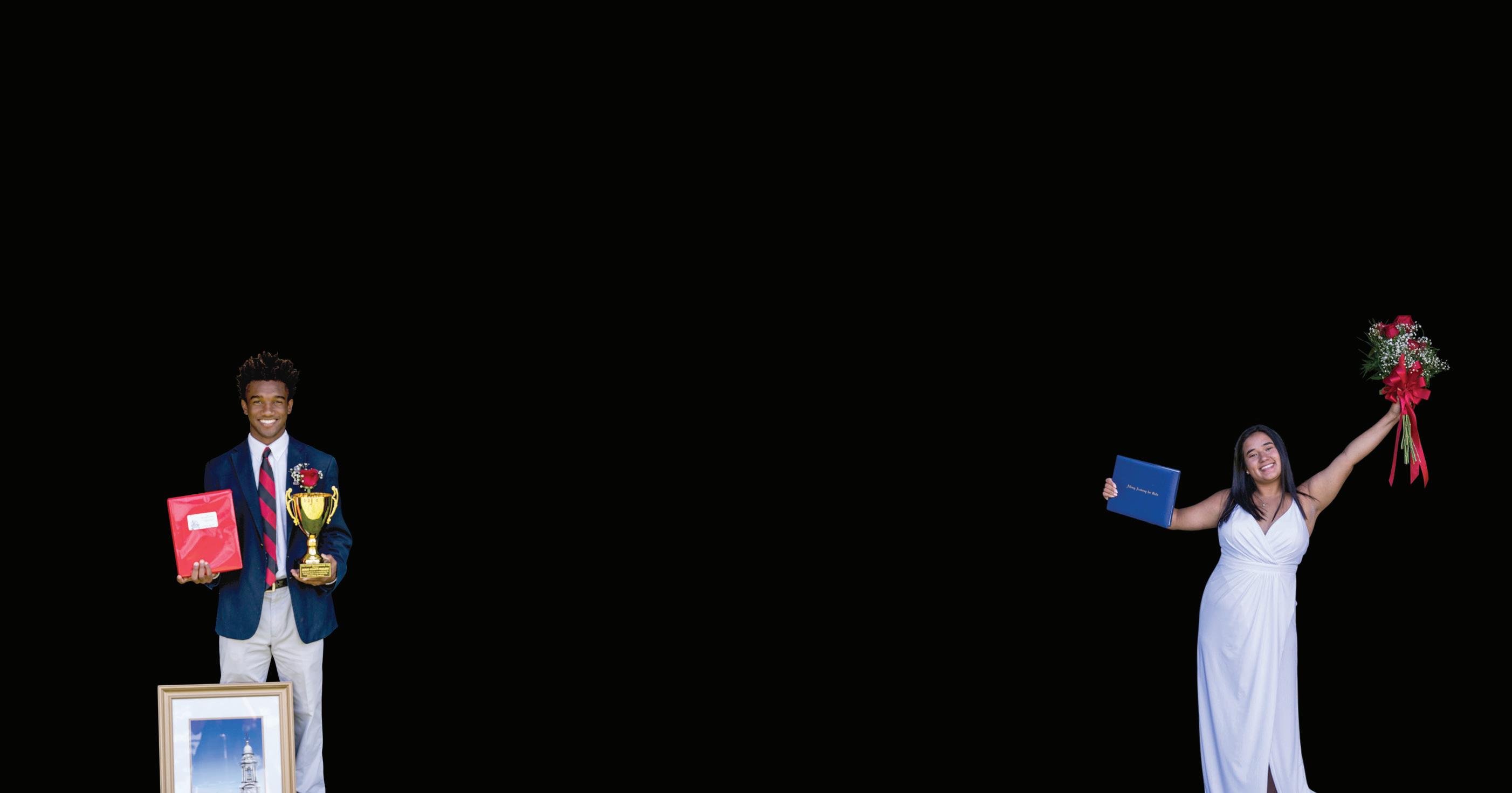
Left Ahmad Praileau ’20 holds the Goold Sportsmanship Cup award along with the Senior Art Purchase award and the Studio Art Award. Right Victoria Blancovich ’20 celebrates her moment during the Diploma Conferral.

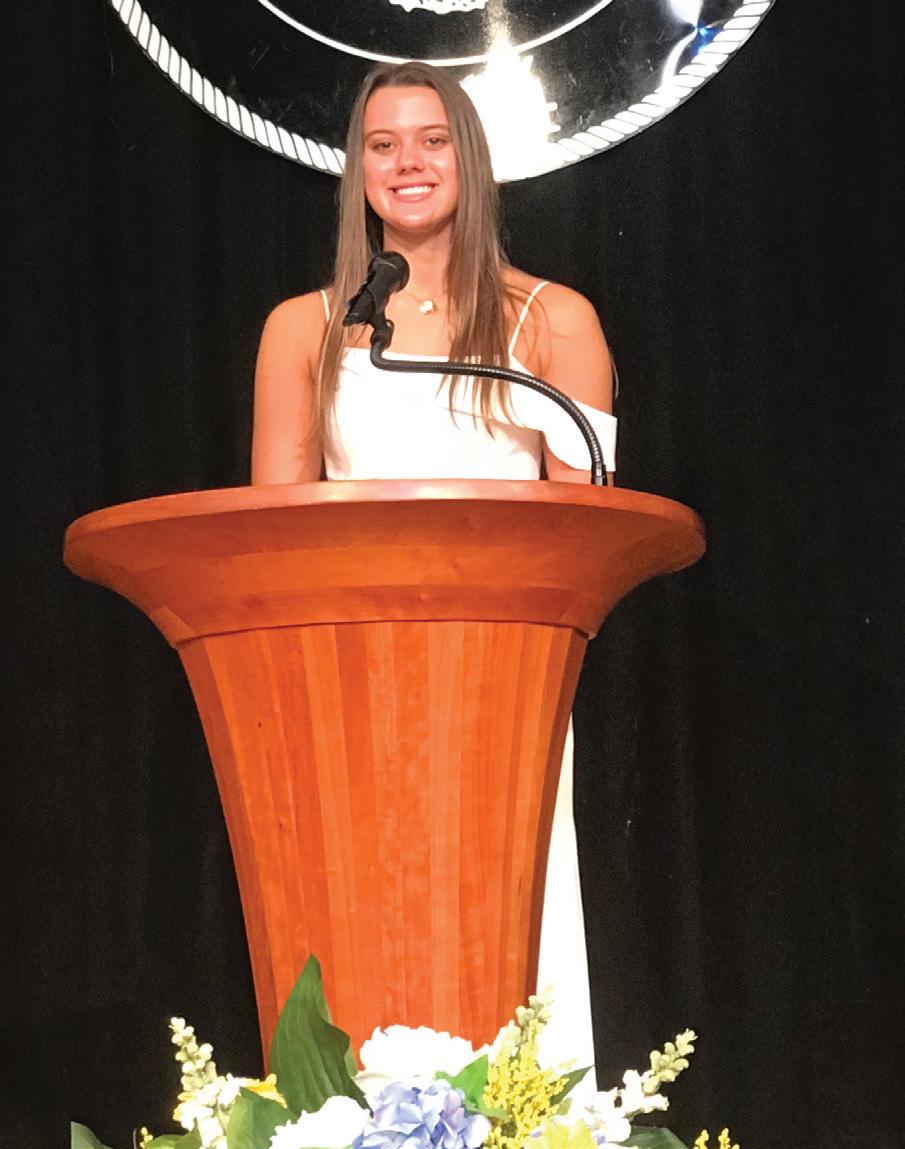
ABOVE: Former Trustee Chris Bender ’78 congratulates his son, Matthew, during the Diploma Conferral at The Albany Academy on June 9. Board President Nancy Carey Cassidy P’13, ’15 looks on.

Geoffrey and Laurel Plante P’20, 22 share a special moment with their daughter, Allison, during the Diploma Conferral on June 8 at Albany Academy for Girls.
AA Valedictorian Chenrui Zhang ’20.

Lisa and Michael Hayes ’83, P’18, ’20, ’23, ’27 enjoy the moment with their daughter, Samantha, during the Diploma Conferral at Albany Academy for Girls. AAG Ranking Scholar Makayla Madison Stannard ’20.
AAG Commencement Speaker Sarah McLaughlin ’89, a Federal Management Specialist with the National Marine Fisheries Service, was part of the pre-recorded Commencement video shown on June 15. After graduating from AAG in 1989, Sarah received a B.S. in Biology and Environmental Studies from Tufts University and a Master of Public Management degree in Environmental Policy from the University of Maryland.
ABOVE: Shannin Cato ’20 and her family share a proud moment during the Diploma Conferral at Albany Academy for Girls on June 8.
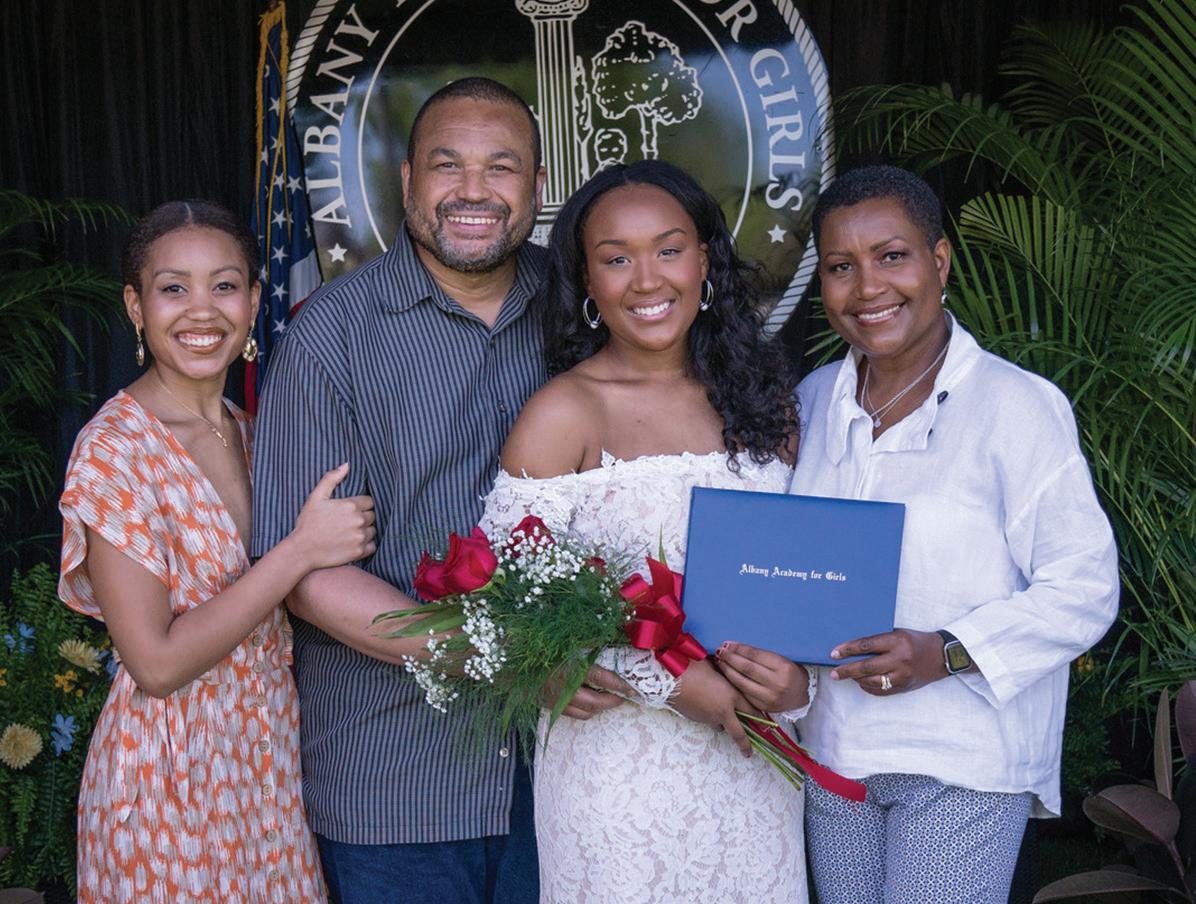
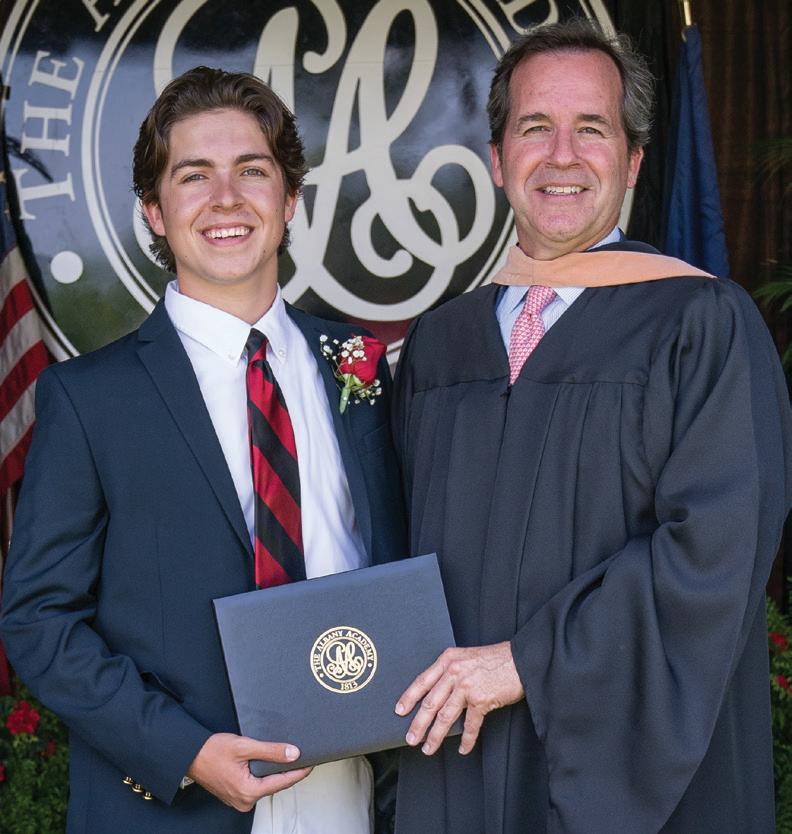
Board of Trustee Member Michael Lasch P’20, ’22 congratulates his son, William Lasch ’20, during the Diploma Conferral at The Albany Academy on June 9.
AA Salutatorian Ali Mohsin Naqvi ’20.

Assistant Director of College Counseling and Special Events Coordinator Amy McDonald P’19, ’20 shares a very touching moment with her son, Austen. Amy was an integral part of the wonderful events put together during Commencement.
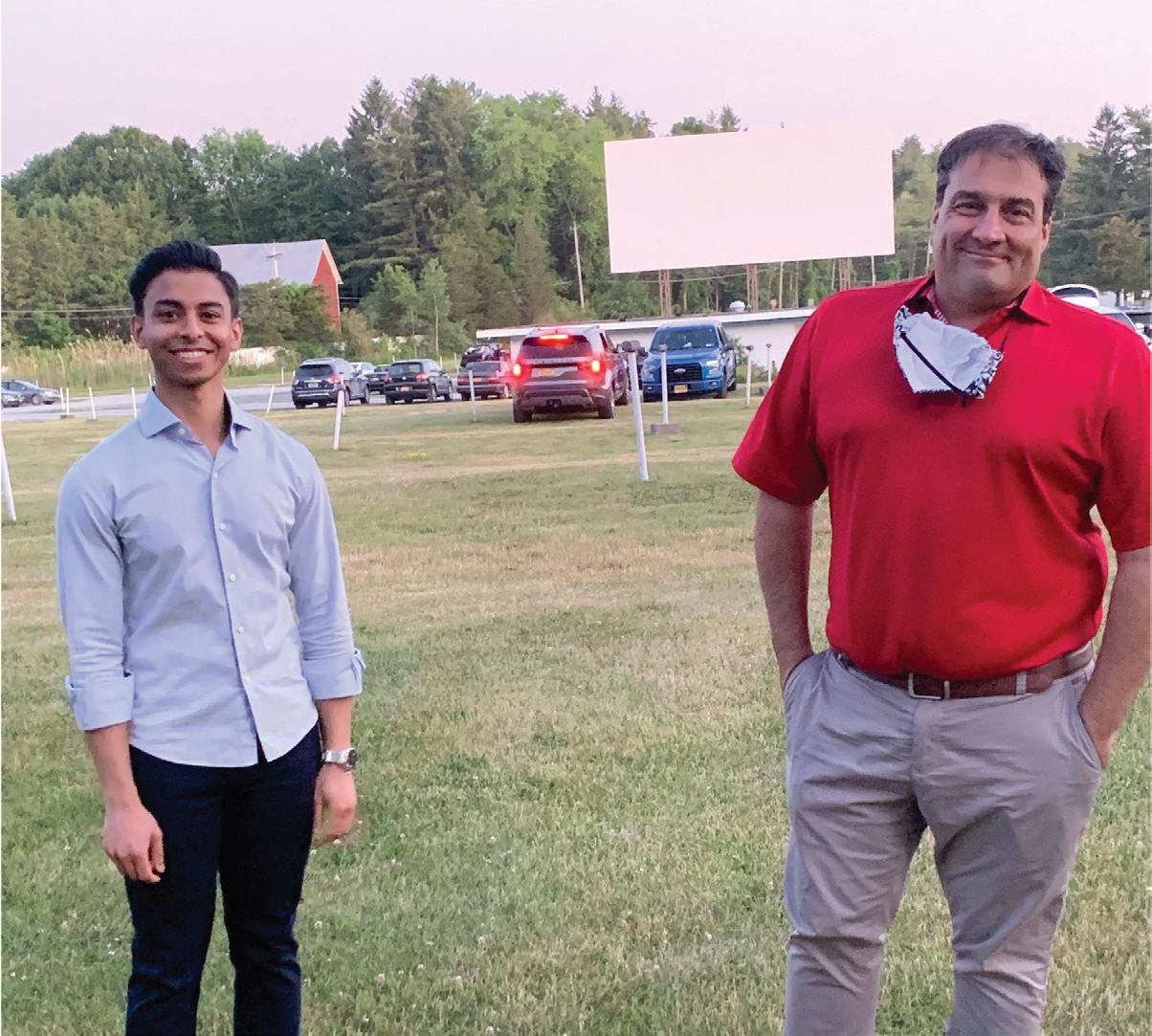
AA Commencement Speaker Alydaar Rangwala ’11 pre-recorded his graduation remarks but was also able to attend in-person the AA Commencement ceremony at the Jericho Drive-in. Alydaar was a lifer at The Albany Academy and currently serves as a Principal at Perry Creek Capital, an investment firm in New York City. After graduating from The Albany Academy in 2011, Alydaar received an A.B. in Applied Mathematics from Harvard College. Joining Alydaar at the ceremony is Head of School Chris Lauricella P’20, ’22. Mathematics from Harvard College.
A new way of learning and working.
Elissa Smith P’23, ’26 is a member of our Marketing and Enrollment Committee. Her husband, Justin, is a 1996 graduate of The Albany Academy.
Elissa Smith Parent
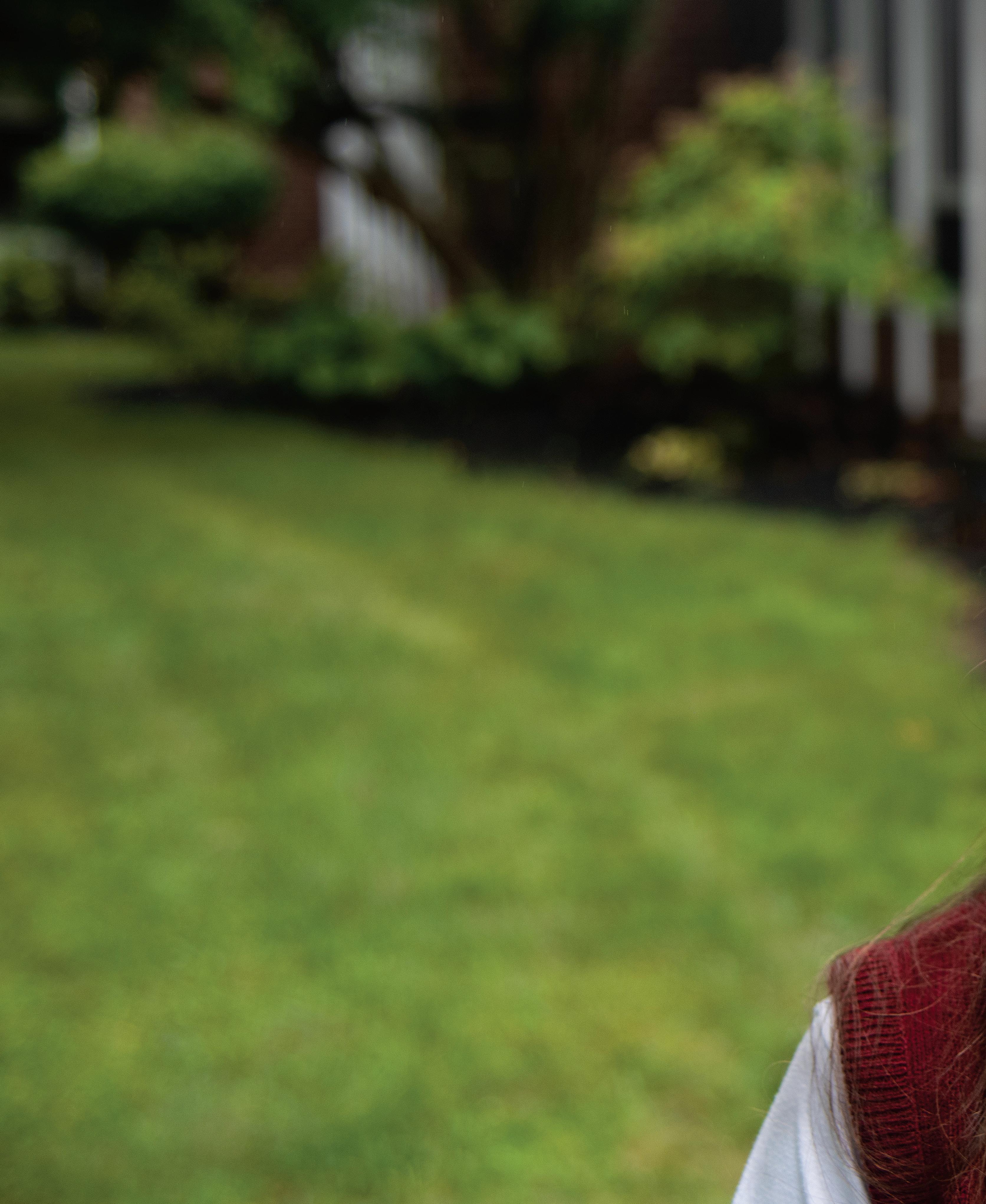
As a parent at the Academies for several years, and working a full-time job, Elissa Smith P’22, ’28 shares her thoughts and ideas during these challenging and changing times. Her daughters started their seventh year at the Academies this fall. They have experienced lower, middle and upper school education at AAG. She says, “throughout each level, the girls have received a very personal and well-rounded experience. An Academies education is personal on so many levels. The faculty and staff get to know each child and their families. Teachers can identify strengths as well as areas for growth quickly and, with the small class sizes, meet each child’s unique needs. Extra help as well as enrichment experiences are widely available and the girls take advantage of these to meet with their teachers outside of class, participate in a variety of clubs, and develop strong mentoring relationships with their advisors.”
Elissa believes because of their well-rounded Academy education, her daughters have broadened their participation in the arts, athletics and have had the benefit of classmates who have diverse backgrounds. From the beginning of lower school, she says her girls have participated in school plays, sang in musicals, tried new instruments, taken theater and dance class, and explored their creativity through an array of art classes. She identifies that the unique way our athletics program is structured allows middle school students to try new sports and participate on teams that they may not have had the opportunity to in a larger school. Academy students come from many different cultures. Her daughters learn firsthand from their classmates about different customs and traditions and can openly ask questions. Deep friendships span cultural boundaries bringing the girls together to create the unique culture that is The Albany Academies.
This past spring, during distance learning, Elissa shares that within two weeks of New York State closing schools, she had to coordinate a shutdown of her office and had to transition all her staff to work remotely. It was an extremely stressful time professionally for her, and she was less than thrilled about the idea of trying to run a business remotely and manage homeschooling children. However, she says “the Academies had prepared their students, faculty, and staff well. The girls left for spring break with all necessary supplies from school. They had practiced accessing Zoom and learned how to interface with their teachers and other students through the platform. Parents were continuously updated, and educational Zooms were provided for us on technology and logistics, and how the curriculum was being handled.” She describes her daughters logging on each morning at 8:00 a.m. and met with their teachers. They had interactive Zoom classes throughout the day and had breaks to complete projects and classwork as well as to provide time away from screens. Their teachers continued to meet individually or in small groups for extra help and students were able to meet to complete group
The stories that follow reflect how an alumnus, alumna, parent, and faculty member have carried out their lives both personally and professionally during the pandemic.
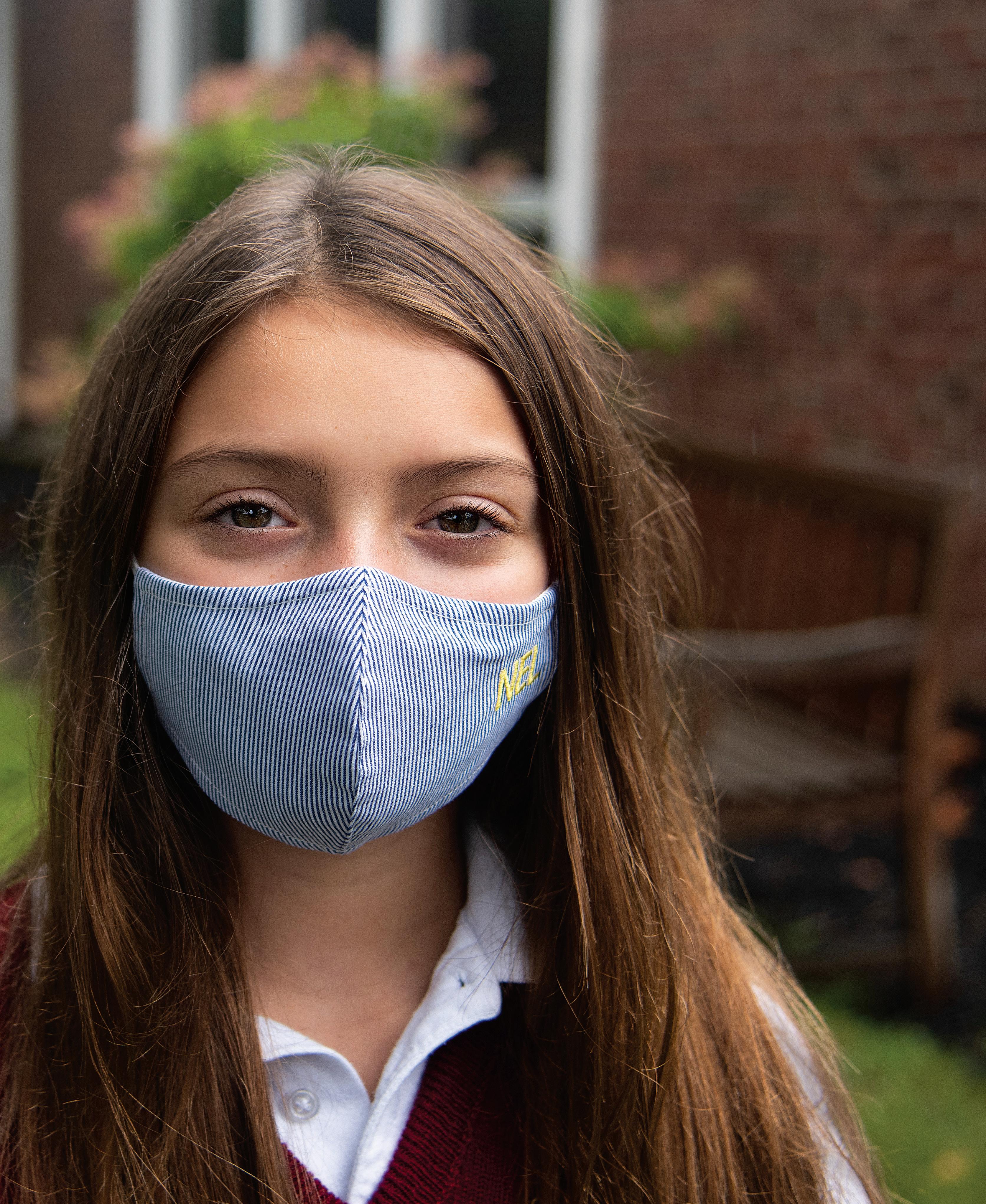
Natalie Levy starts school on campus at Albany Academy for Girls.
Elissa and Justin Smith enjoy time with their family at home during the pandemic. projects remotely. Elissa says, “Mrs. Rey was even able to keep all levels of art students engaged using items they could easily find around their house. The girls were busy from 8 a.m. until after 3 p.m. Although distance learning for children is far from ideal, Academy did a fantastic job not only providing core curriculum, but also maintaining the broader education we have come to appreciate so much.”
Elissa describes how she balanced work and children at home during distance learning. Keeping her family and herself on a schedule was important. She used the early morning hours when everyone else was asleep to get her more focused work completed. She had a schedule of hours when she was working, so her kids knew only to interrupt her for immediate issues. They met each day for lunch as a family, catching up on what happened during the morning and played cards
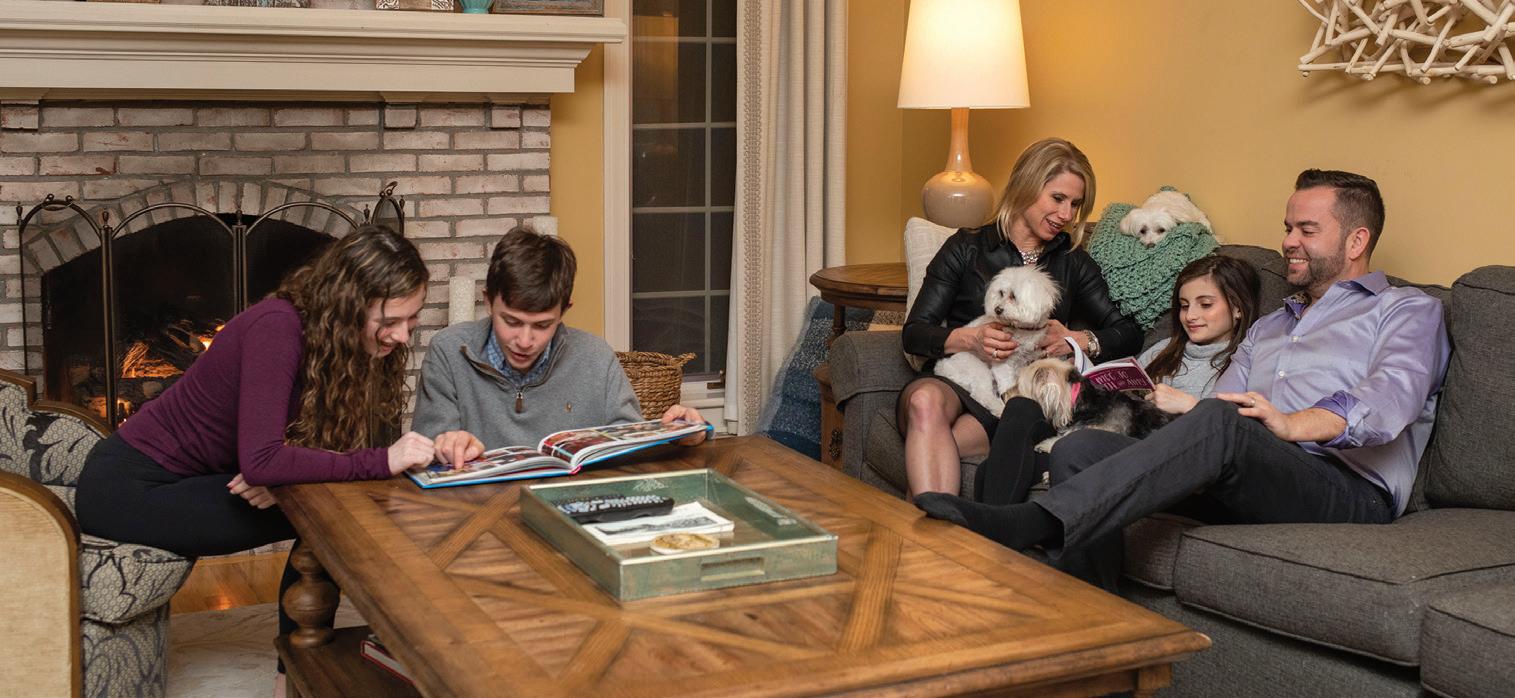
or a board game to break up the day. She also tried to end each workday at a determined time so she could set aside work for family time. Although days did not always go smoothly, this system helped keep their sanity and transition between work life and home life when they were not leaving the house.
Elissa reflects on this experience and how we can move forward with resilience. She says, “We need to be flexible and to think of others. COVID-19 has stretched everyone’s ability to be flexible. We immediately lost our routines, our sense of normalcy and our connectivity to friends, family, and coworkers. We had to find different ways to socialize, to keep in touch with the people we care about, and to keep ourselves mentally healthy when our world changed so quickly. We found it helped to think of others—to check in on our neighbors, to connect with grandparents more regularly, to donate time and desperately needed money to organizations struggling to help those most impacted by the pandemic. Our youngest daughter became a pen pal to her great grandmother who is in an assisted living facility in Florida and isolated in her apartment. It gave them both so much happiness when the mail came bringing a new letter or a package to open. This crisis has been a lesson in coping for us all. It has impacted all of us differently but has left none of us untouched. If we are flexible, if we think of others and if we cope well, we will get through this better than we went into it.”
Matt Essery Teacher
Matt is a graduate of Houghton College with a BA in biology and a concentration in secondary education, Matthew also earned an MS in secondary education from Mount Saint Mary College.

Faculty Member Matthew Essery joins us this fall as the new chair of the Science Department. A member of The Albany Academies faculty since the beginning of the 2017-2018 school year, Matthew has taught biology, anatomy, physiology, and AP biology. He is also an AAG advisor and demonstrates his enthusiasm for ecology by managing the AAG greenhouse. During the summer, he has been engaged in the Academies’ summer camp as a teacher and director of the Science Academy and The Leading Edge. Matthew also contributes to the Academies’ community as an active member of the Marketing & Enrollment Committee.
He is taking on the role as department chair as Bo Buran, who served the school and the Science Department for the last 14 years, departed in June. “Bo took the Science Department through a period of significant change,” Matthew said, “and has impressive shoes to fill, but I’m ready for the challenge.”
As the new chair, Matthew has some great thoughts and ideas he is working on implementing and has been thinking a lot about them during these past several months. “I realize new ideas have to fit in with the challenges that face education today, such as increasingly digital work environments, nearly infinite information access, global environmental changes, and, of course, the current global pandemic. However, scientific literacy and deep critical thinking are the two most important skills our students can (and do!) develop at the Academies. It’s important, in all our sciences and in all divisions, to continue to build this literacy in conjunction with media literacy.”
As a means of deepening the connections among technology, information systems, and scientific thinking, the Science Department is now officially the Science and Technology Department. The collaboration among technology and science teachers will help build those skills in Academies students.
Matthew said he believes there is an increasing number of environmentally conscious students in our current student body. He feels there is room in the science program for a closer focus on ecology and environmental interrelationships.
One goal the new department chair would like to achieve is to get students in all divisions involved in continuously monitoring ecological variables on the campus, including weather and soil chemistry and native and exotic plant species. This could lead to students having a research-backed voice on environmental decisions the Academies might be considering. “Connecting the information we gather with other educational and research organizations will allow us to incorporate a more global view as we study the environment in and around Albany,” he said. “Foundational skills and experiences set the stage for all future learning in our youngest students. We know that identity formation and the transition from being a child to becoming an adolescent is when many students decide what subjects they like and which they don’t like in middle

Matt Essery shared a video of himself releasing classroom trout into Vly Creek in Voorheesville. What would normally be a full-day field trip in May became an early release in March. The fish were raised by his ninthgrade class in association with the NYDEC and Trout Unlimited. school,” he said. “We also know that performance in the Upper School in large part determines potential options for college. None of these exists apart from the others.
He explained that he believes a whole view of each student and each student’s educational journey is essential. “Wrapping our lower school science specialist into the Science and Technology Department is going to help with this. Celebrating the science accomplishments of our Lower,
Middle, and Upper School Matthew knows the importance of developing a student from elementary school through middle school and high school. He understands that wonder, fun and science accessibility are three really important aspects of lower school science education. “Wonder fosters enjoyment, interest, care and empathy, all of which our world needs,” he said. “Experimentation and exploration are synonyms for fun and play. Lower school students need the space and time to design, build, and explore science through using age-appropriate tools and materials, and they are more willing to try new things than older students. The more the younger students experience, the deeper their experiences will be in the future, especially as they move into middle school.”
The pandemic has put a spotlight on science. Matthew believes that understanding viruses, biological interactions with viruses, population dynamics, economic effects, and vaccine research are all dependent on the scientific method. “The world desperately needs this information to make nuanced and informed decisions about how human populations should be managed, vaccines generated and capital spent,” he explained.
“The pandemic hasn’t changed science. New information is generated because science is a method, not a set of facts. It is one of the only subjects that has self-correction built into it. Scientists and researchers are all about disproving hypotheses,” he further explained.
Matthew is very passionate about science and teaching. “Education and science are both all about relationships. I am particularly excited about helping students realize that they matter to the world around them. They affect things—whether it is a spider that they decide to bring outside instead of kill because they understand its ecological value, or the things they decide to spend money on, or the words they choose to use in a conversation with a peer. They have an impact. While we can never know the true scope of our personal impact on everything, students can understand their impact by observing, reflecting, and taking an interest in those around them. Science is just one of the ways to explore these relationships. It is my hope that in realizing and taking responsibility for their impact on the world students will live deep, critical, conscientious lives. The world will be better for it.”
Seth Wander Alumnus
Seth Wander ’02, Alumnus Seth Wander, M.D., Ph.D. ’02 has been working on the front lines during the health
M.D., Ph.D. is a care crisis resulting from the COVID-19 pandemic that has wreaked havoc on our nation and medical oncologist the world. As a medical oncologist at Massachusetts General Cancer Center in Boston, Seth’s at Massachusetts clinical practice is dedicated to the treatment of patients with all stages and types of breast
General Cancer cancer. He divides his time between the clinic and the laboratory, where his research is focused Center in Boston. on developing novel treatment strategies for metastatic breast cancer. “COVID-19 has posed a variety of unique and difficult challenges for the medical community. As oncologists, we regularly administer medications (like chemotherapy) which can compromise the immune system,” Seth said recently. “Patients receiving these treatments may be at increased risk of infection (including from COVID-19), and we have worked diligently to institute new guidelines in our clinic to promote social distancing and reduce the chance of COVID-19 transmission.” At the same time, his team remains committed to ensuring that patients continue to receive all necessary cancer-related care. “We have dramatically increased the use of virtual technology to promote flexibility for patients and health care workers, who can interact remotely to discuss treatment plans and progress,” he added. Like many clinicians across the country, as the COVID-19 volume reached its peak in Boston, Seth was asked to serve on COVID-19 units in the inpatient setting. “This experience presented a variety of challenges both clinically, as we were treating patients with a novel and, at that time, poorly characterized disease, and personally, as we had to consider the exposure risks to ourselves and family members at home,” Seth said. “During that period, my pregnant wife and daughter quarantined with family members in New York so that I could come and go from these shifts without risking any exposure to them.” Seth ’02 and his wife, Hilary ’02 are now the proud “During that period, my pregnant wife and parents of two daughters. Their new addition is daughter quarantined with family members Adrienne who is named in New York so that I could come and go after Seth’s grandmother from these shifts without risking any from the Class of ’41. exposure to them.”
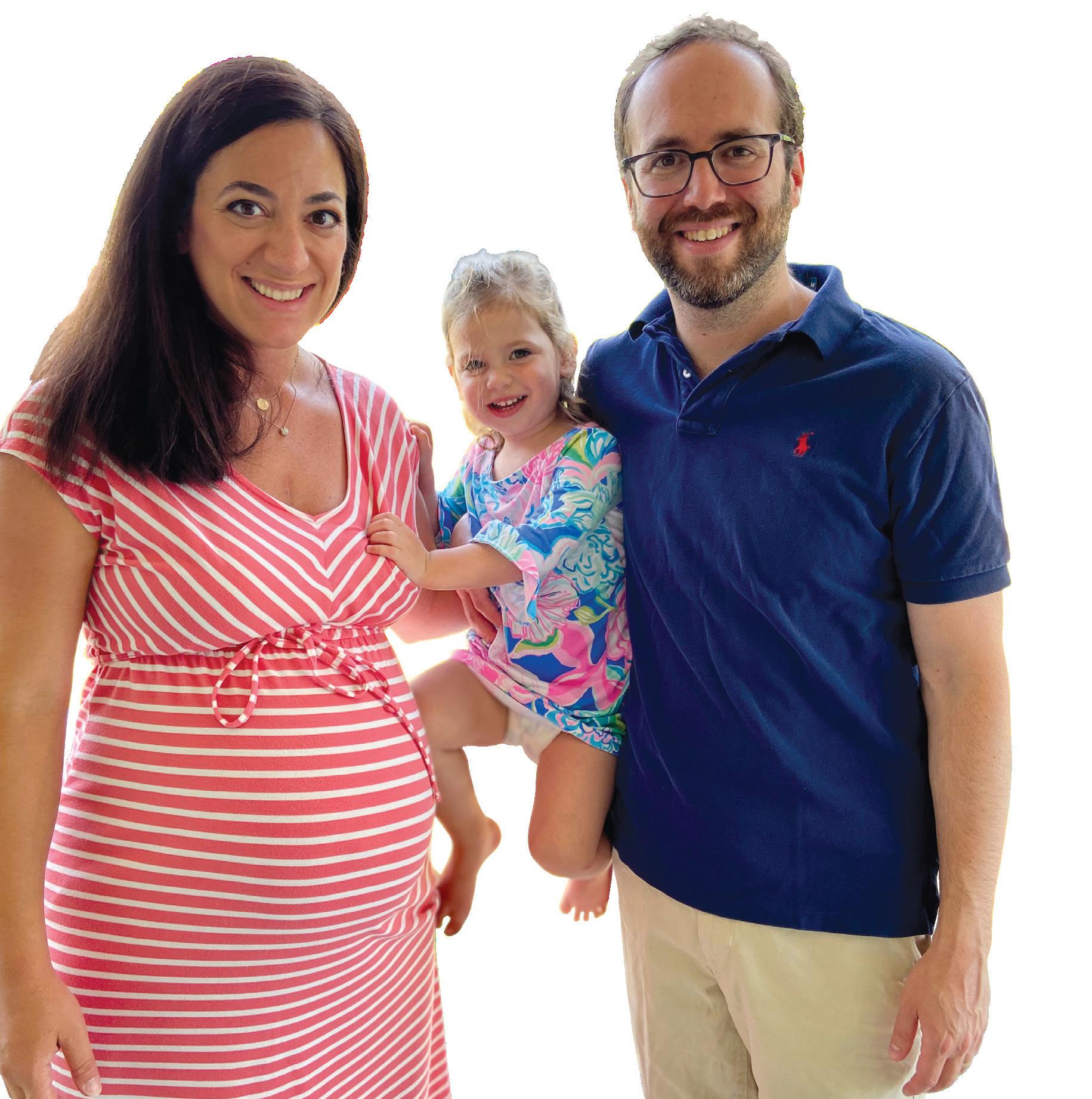
These deployments also posed unique challenges to outpatient oncology efforts, as the physicians and nurses within Seth’s practice who were not deployed worked to assist in providing clinical care to patients whose physicians were working actively on the COVID units. In the end, Seth said, these formative experiences highlighted the amazing potential in the health care system as physicians, nurses, and support staff from all across the medical spectrum came together to provide exceptional care to COVID positive patients. In relating how the pandemic has impacted his family, Seth said, “Our family has been exceptionally lucky to live in a place like Boston, where people have demonstrated a great commitment to following public health guidelines. We have relied on friends and family, who have been very kind to assist during periods when I have been deployed to the inpatient setting. As our children are not yet school-age, we have not had to confront many of the challenges facing so many families around the country as they weigh

the safest path back to school. And, like many families across the country, we have tried to use these unfortunate circumstances to spend more quality time at home together.”
Seth’s experience extends beyond treating patients. As a clinician working in a large academic medical center, he has had many opportunities to learn about the biology of COVID-19 and participate in both clinical care and research efforts related to the virus. Because of the wide spectrum of possible symptoms (ranging from asymptomatic to critical illness), he points out that it is very important that everyone attempt to follow the widely adopted basic tenets related to social distancing, hand hygiene, and mask use.
“I would encourage individuals to remain informed by understanding state and local guidelines, as the conditions and exposure risk related to the virus may differ over time and among distinct locations,” he advises. Further, he encourages individuals who have questions about COVID-19-related symptoms, risk factors, or precautions, to discuss them with their primary care physicians.
Karen Avery Alumna
Karen Avery’s role at the PBS Foundation is Senior Director, Fund Development and she primarily works with foundations and corporations that fund PBS at the national level. “Fundraising is often a challenging activity at any time, and it’s helpful for anyone thinking about a job in fundraising to want to hit their head against the wall repeatedly, because there are far more “no’s” or “not now’s” in this field. But if you have the pleasure of working for an organization with a mission and purpose you feel strongly about, it can be very rewarding to secure support for that organization and help make it more sustainable” said Karen.
Obviously, the COVID era has wreaked particular havoc on the nonprofit sector, which has caused an additional strain on fundraising overall. However Karen has seen that it is also a time when people are eager to help. “I have watched philanthropy grow and step up in some extraordinary ways. I serve on the Board of my local community foundation, and we have seen people in City of Alexandria respond quickly and generously to address the crucial needs COVID and the quarantine have brought on our area.”
During our current crisis, many people have told Karen that they see PBS as being more important than ever, and they are interested in finding ways to support, partner, and connect. “Parents, educators and caregivers have long trusted PBS as a source of enriching programming for children, and that’s especially true today when millions of kids are home from school, teachers are instructing remotely, and parents are seeking ways to help keep their children healthy and engaged. We at PBS are proud that we’ve responded to this need by offering creative new solutions based on the good work we’ve been doing all along,” said Karen. PBS is leading the way in helping kids learn during this significant time of disruption in education. Many PBS stations are partnering with school districts to meet the educational needs of students in their communities. Continued support will help get high-quality PBS educational resources to communities all throughout the country.
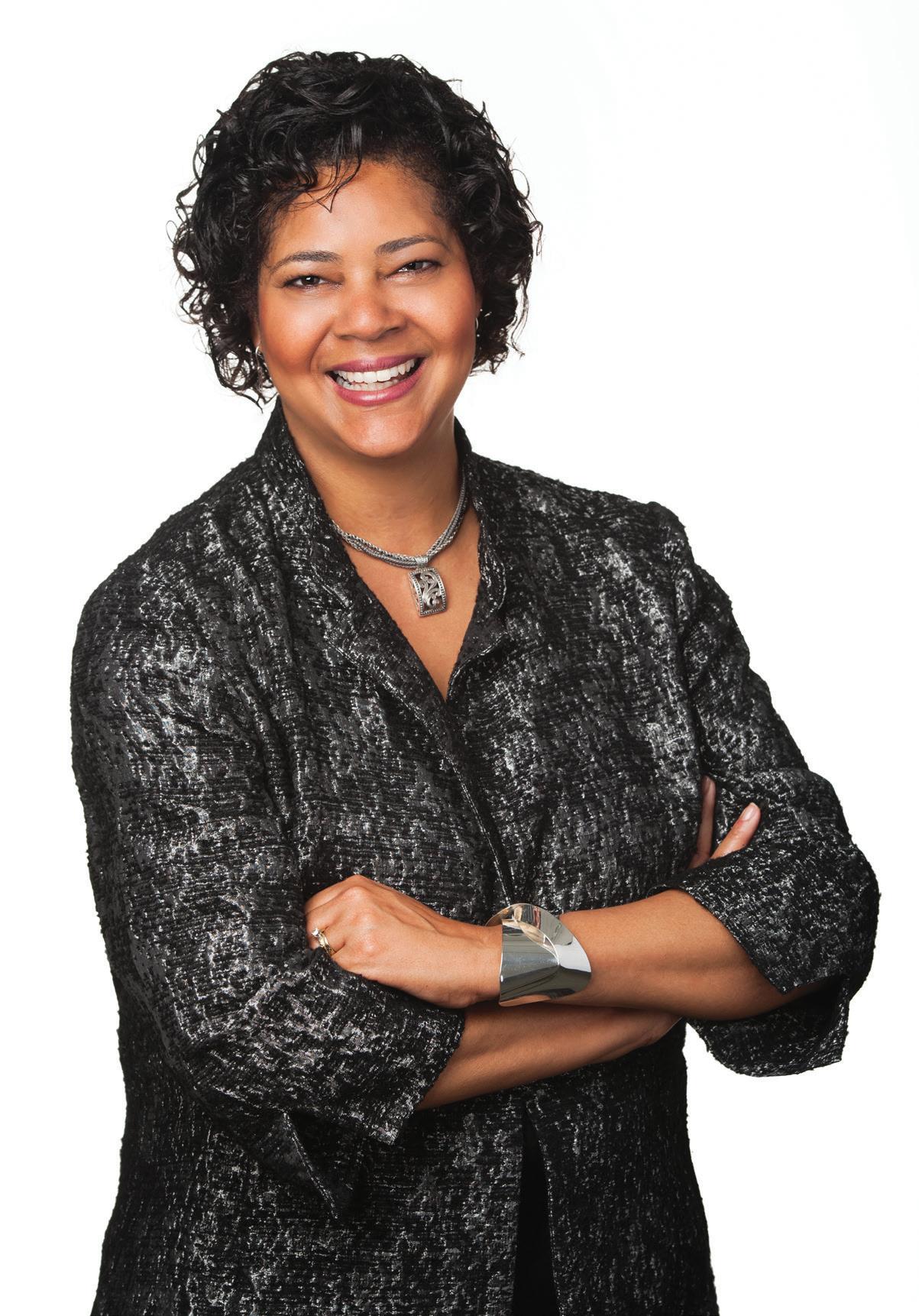
Karen Avery ’83 received a Bachelor’s and Master’s Degree from Harvard University. Karen is a member of the Academies’ Board of Overseers and was a Commencement Speaker at AAG in 2017. She has two brothers, Keith ’74 and Kevin ’80, who graduated from The Albany Academy.
JUNE 26, 1831 Cholera made its appearance at St. Petersburg, Russia. The number of cases in the first 18 days, 4,916; deaths, 2,219.
MARCH 26, 1832 Asiatic Cholera appeared in Paris, France. In the whole of France 239,534 persons were attacked and 94,665 died.
JUNE 8, 1832 First case of Cholera asphyxia in America occurred at Quebec.
JUNE 27, 1832 Cholera appeared in New York City.
JULY 3, 1832 Albany Mayor John Townsend issued a proclamation forbidding the approach of any river vessel with anyone sick aboard nearer than one mile below the south ferry, because of a rumor there were cholera cases in New York.
JULY 5, 1832 Albany doctors report seven cases of Cholera, from which there were four deaths.
The Cholera Pandemic of 1832


By John McClintock ’57 (former archivist) With anticipation and dread, Albanians read these contemporary newspaper notices. News came by ship from Europe, the very ones, perhaps, bringing persons with the disease. The only telegraph in the world was in The Albany Academy classroom of Professor Joseph Henry.
In the 1830s, it was thought that yellow fever and cholera were caused by a miasma of vapors emanating from rot, garbage, and filth, especially during summer in waterfront districts. Rivers and creeks carried sewage. Harbors and backwaters pooled the effluent. But vibrio cholerae, a comma shaped bacterium, was not an aerosol. It needed to be ingested, either, even today, by eating poorly prepared shellfish or by drinking water from sources invaded by fecal matter. This was later proved in 1854 when English physician John Snow produced the famous map of cholera deaths in central London, showing that the most common infections by cholera came from proximity to water pumps.
Once, the streams in Albany’s three ravines ran clear and fresh. They powered mills and supported fish. The description of the city in Munsell, Annals of Albany, is rosy...
[Albany’s] habitations occupy the alluvial valley of the Hudson, about a quarter of a mile in width, and ascend three hills of about 140 feet elevation, separated by deep valleys, through which considerable streams of water formerly ran, known as the Foxen kill, the Rutten kill, and the Beaver kill….The Foxen kill, when the city was first settled, and for a long time after, afforded abundance of fish. The Rutten kill was a lesser stream, having its source above Lark street, but which sent down a formidable volume of water in times of freshet. …This also was a never-failing brook, stored with fish, and was the only one that came within the old city walls.
One old Dutch custom was to allow household waste and garbage to flow into the streets. And pigs, by ancient practice, roamed these streets and open spaces. What the pigs didn’t consume found its way to the creeks. By 1832...
Great complaints were made of the filthy condition of the Foxen kill, much of which was still an open creek, and the receptacle of all the filth of the district which it traversed…The Foxen Kill and Rutten kill, formerly considerable runs of water… are now obliterated, and their ancient beds turned into sewers.
Vibrio cholerae itself left its ancestral home in India through British colonization and commerce. It was accelerated by improved river transportation, such as steamboats, and by extending the reach of ports and rivers by canals. It broke out in the United States and in Albany in 1832-1834, 1848-1849, sporadically in 1854-1855 and in 1866. Especially in the hot and humid summer weather of 1832, to suppress the foul “miasma,” the authorities burned tar in barrels, casting a black pall over the city.
The board of health on July 3, 1832, reported that two persons of very irregular habits had died of “symptoms resembling malignant or spasmodic cholera.” The Mayor called a meeting of the Medical Society to devise means to address the health crisis. All summer, the city’s prominent physicians met every evening at City Hall to record the names and circumstances of the deceased. The total number of reported cases was 1,147. Of these, 422 were fatal. The city population at this time was about 26,000.
Stores closed, the streets were often almost empty of carts and coaches, and the wealthier citizens hurried away to country places to escape the dreaded disease. Church and theater gatherings were curtailed or closed. Scarcely anyone visited Albany. Steam boats ran empty, and the hotels were deserted.
The Cholera Record, published by the City in 1832 and the “Report to the Governor” of August 14, 1832 by Dr. Lewis C. Beck (brother of T. Romeyn Beck, the headmaster of Albany Academy) provide details of the characteristics and progress of the disease. Beck traveled widely to affected locales in the state, and compiled information and statistics from physicians and local boards of health. The complete list of 431 listed in the sources is provided in my paper (see link below). There are 324 records with age of victim. These range from 2 to 92. Eighteen and under: 64 children; 50 and older: 70 persons. Average age: 34.4, standard deviation 18.3; males: 229; females: 167; recorded as African American: 25; (by assumption) Caucasian: 406.
The worst of the outbreak in Albany occurred during the summer of 1832. In those days, the Academy’s academic year began the first Monday in September and the fourth
quarter continued through July and the first week of August. On July 13, 1832, the Minutes of the Academy trustees show...
The Trustees met, pursuant to adjournment. The Minutes of the last meeting were read and approved. In consequence of the prevalence of Cholera, and the absences of students, (more than one half) reported by the Principal, the following resolutions were adopted. Resolved that the vacation for the present year commence on the 1st of August and continue during that month. Resolved that the Annual Examination and public exercises be postponed until the further order of the Board. Resolved that in case there should be any deficiency in the monies for the payment of the salaries of the teachers, the treasurer be authorized to borrow what may be required for 60 or 90 days.
Joseph Henry, Professor of Mathematics and Natural Philosophy at Albany Academy, was on the extended August recess described in these Minutes. His mother’s and his wife’s family, the Alexanders (Joseph Henry and Harriet Alexander were first cousins), lived in Galway, Saratoga County, New York, where Joseph had grown up, 36 miles northwest of Albany. Staying at his Uncle John Alexander’s in Galway, Henry wrote on August 27, 1832:
The pure air of the country has had an almost magical effect in restoring our prostrated strength. [We hope] that those we have left amidst the pestiferous atmosphere of Albany are still preserved from the effects of the disease…We saw nearly all our friends at church at the corners yesterday and have promised more visits than I fear we will be able to pay unless indeed the trustees of the Academy, in their wisdom should see fit to postpond [sic] the assembling of the Academy for a week or two longer.
The Albany Academy did open as scheduled on the first Monday of September (the 3rd) and, judging by subsequent Minutes, conducted its business as in any other academic year. Enrollment in 1831-1832 was 240, 1832-1833, 210, and in 1833-34, back up to 250.
Albany Female Academy, however, did not open on time after the August, 1832, recess. Henry commented, “I see by an advertisement in the Daily that the Female Academy does not open on the first Monday in September on account of the cholera.” On September 17th the trustees were able to announce that “the health of the city was perfectly restored, and that for a week the regular exercises of the [Female] Academy had been going on, gently warning students of the necessity of immediately resuming their studies.”
On Sept. 1, 1832 the board of health made a general report of the epidemic and the newspapers—under pressure—omitted the daily report of cases and deaths. The principal merchants united in an address to the public, assuring their friends and customers abroad that they could now visit the city with safety. Two weeks later, “The board of health congratulated the citizens on the continued good health of the city since the month came in; the reports of the physicians were no longer required, and the hospital opened for the reception of cholera patients had been closed.”
Thus passed a local instance of a global pandemic, not the first to disturb the vibrant community of Albany, and not the last. It was a terrible time, but it did not prevent a resurgence of prosperity. Publisher Joel Munsell reported on the city’s renewed energy within months: “Among the structures that were being erected in unusual numbers were Stanwix Hall, Female Academy and Baptist church in North Pearl Street, the Universalist Church in Green Street, the Friends’ meeting house in Plain street…. Harmanus Bleecker was erecting a block of dwellings from Pearl to Chapel streets on Steuben Street.” The Female Academy referred to opened September, 1834.
This article is a condensation of a paper with attributions, statistics, appendices, maps, endnotes, and bibliography, available at www. albanyacademyhistory.org. Choose “Menu Hub,” then Feature 11.
a2 people
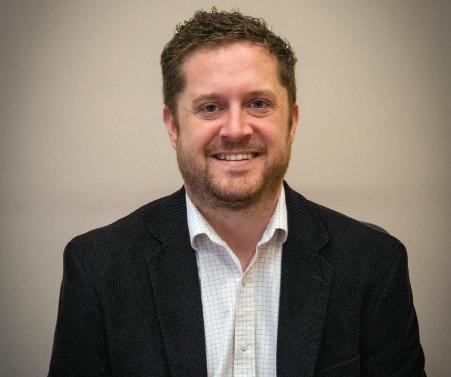
Nicholas Forcier
director of admissions and enrollment
My first couple of months at The Albany Academies have been an
incredible experience. Starting a new job during a pandemic is difficult, but particularly when you work in education. As Director of Admissions at a new school, I would typically immerse myself in the history, culture, and traditions of the institution right from the beginning. But right now, everyone’s primary focus is on the future. What will school look like in the fall? How will we balance our desire to keep our community together and also keep everyone safe and comfortable? How will we deliver on all the outcomes that make an Academies education so valuable given that we won’t be able to do it in exactly the same way we have in the past?
These first couple of months, for me, have been about really listening to what our families want and need, what they’re curious about, and what is causing them anxiety. That is an emotionally intensive process, especially when I don’t yet have many of the answers that we’re all looking for. That is a less definitive answer than I’d like to give, and I’m sure it’s less definitive than what our parents would like to hear. But so far, all I’ve heard from returning and prospective families is total understanding. No one has balked when I’ve told them, while we don’t yet know exactly what the next school year will look like, we are planning intensively for every plausible scenario. The prevailing feeling seems to be one of trust, that we’re all going to navigate this together.
I’ve been equally encouraged by what I’ve seen and heard from my new colleagues who comprise the faculty and administration of the Academies. In every meeting I’ve participated in, I’ve seen a level of thoughtfulness and anticipation that tells me that we will be ready for anything. Every time a question is asked, somebody else has an answer, an idea or a suggestion. COVID-19 caught us all off guard—but it also served as the impetus to make sure that we are more adaptive. Not all schools have learned that lesson. I’m happy to say in my first couple of months at the Academies, I’ve developed total confidence that we can be a great option for many families.
To that end, I ask you to remember that the Academies community is our best referral source. Please be on the lookout for opportunities to recommend that friends and colleagues come and visit us—my team and I look forward to welcoming them to campus!
Rich Puccio - Football
Richard Puccio is the new Head Coach of the varsity football team, and a Physical Education faculty member. In these roles he is responsible for all football team activities, including attracting talented student-athletes to the program. Rich brings 26 years of high school and college football coaching experience to The Albany Academies, and comes to us most recently from Maine Maritime Academy where he was the Head Football Coach and worked in the admissions department.
Brian Speck - AAG Soccer
Brian is the new Head Coach of the Albany Academy for Girls varsity soccer team. In this part-time role he will have responsibility for all team activities, including attracting talented student-athletes to the program. For 25 years Brian served as the Head Women’s Soccer Coach at Union College. He took over the program at a time when it had just two winning seasons and went on to become the winningest coach in Union women’s soccer history, and 41st all-time among all NCAA women’s soccer coaches. He produced 121 All-Conference selections, including four conference Players of the Year, along with seven All-Americans. On the national level, Brian was a member of two U.S. Women’s Deaf National Team coaching staffs, helping Team USA to back-toback gold medal performances.
Bryan Murray - AAG Ice Hockey
Bryan Murray is the Head Coach of the Albany Academy for Girls ice hockey team. Bryan was a starter for four years on the SUNY Plattsburgh hockey team, finishing his career as a two-time All-American, three-time All-Conference and an NCAA champion. Bryan is the current coach of the Troy Ice Cats U19 girls’ team. He has 20 years of coaching experience, starting out as an assistant at the conclusion of his college hockey career.
Stephen Mallaro - AA Prep Hockey
Stephen serves as Head Coach of The Albany Academy prep hockey team. In this role, he will have responsibility for all team activities, including attracting talented student-athletes to the program. He will also teach leadership in the Upper School. Stephen was a four-year letterman at SUNY Oswego and helped lead Oswego to back-to-back NCAA Division III Frozen Four appearances as the top scoring defenseman in his junior and senior seasons. Most recently, Stephen was a part of the hockey program at King’s College.
Bryan Capitula - AAG Basketball
Bryan Capitula is the new Head Coach of the Albany Academy for Girls varsity basketball team. In this role, he will have responsibility for all team activities, including attracting student-athletes into the program. Bryan comes to Albany Academy for Girls with more than 10 years of coaching boys’ and girls’ basketball. For the past two years he served as the varsity girls Assistant Head Coach at Mohonasen High School.
The Albany Academies exceeded their Campaign for the Third Century five-year fundraising goal of $20 million, raising more than $23.3 million. Thanks to the generous support from donors—parents, alumni, alumnae, past parents, and grandparents—throughout the country and the world, the thousands of gifts supported many important initiatives, including the Borisenok Family Science Center, the Michael B. Picotte Field House, the Schellenberger Alumni/ae Center, the James E. Poole Athletic Facility, The Stevens Center, the Auditorium, and many endowed scholarships. Watch for our 2019-20 Annual Giving Report for a complete listing of donors to the Campaign for the Third Century.
Celebrating the Campaign
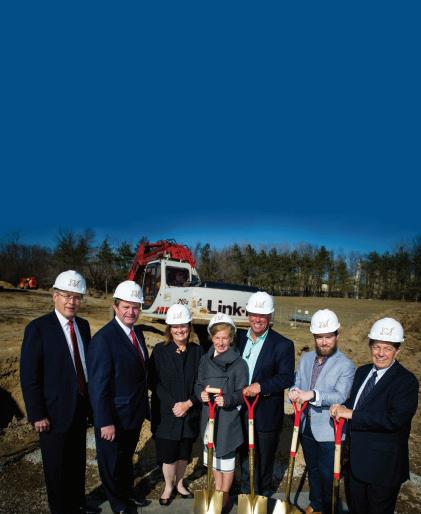
CAMPAIGN FOR THE THIRD CENTURY
Left to right E. Stewart Jones, Jr. ’59, P’90, ’93, ’97, Campaign Co-chairs Bruce DiStefano ’70 and Sarah Elmendorf ’70, P’06, ’08, ’10, Michelle and Walt Borisenok P’06, ’08, Michael Borisenok ’06, and Doug North ’58 participate in the groundbreaking ceremony of the Borisenok Family Science Center in April of 2015.
Borisenok Family Science Center

The building of the Borisenok Family
Science Center on the campus of Albany Academy for Girls was made possible by a lead gift from Walt and Michelle Borisenok, parents of Michael ’06 and Nicole ’08. It officially opened in the fall of 2015 with a ribbon cutting ceremony that included the Borisenok family and many other donors who contributed to the project. The state-ofthe-art building encompasses 6,300 square feet of learning space, includes four classrooms and two Former Head of School Dr. Douglas M. North ’58 prep rooms, a courtyard, enjoys a moment with Walt Borisenok P’06, ’08 and is utilized by both at the ribbon cutting ceremony of the Borisenok boys and girls.Family Science Center.
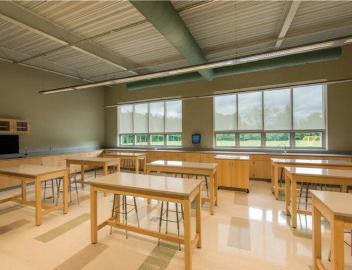
Shirley Stevens French ’47 with her son, Jameson, at the official opening of The Stevens Center.
The Stevens Center
During the summer of 2014 renovations were made to the
previous Albany Academy for Girls Lower School Gym, turning the space into a beautiful Dining and Events Center. The space is now used for lunch at Albany Academy for Girls and for various other school and special events. In May of 2018 the space was named The Stevens Center—made possible through the generosity of Mrs. Shirley Stevens French ’47 in honor of her late father, Winthrop P. Stevens Sr. Class of 1916, P’44, ’47 and his many contributions to the Academies.

Michael B. Picotte Field House

In the spring of 1964, contractor Waldbillig Construction
began the construction of the Field House based on the design by architect Donald J. Stephens. The facility hosted its first hockey game in January 1965, and by December of the same year, the first wrestling match. The Field House, consisting of the ice rink, gymnasium, wrestling room, lockers, and office space was formally dedicated in February of 1966. Today, the renovated Michael B. Picotte Field House— through a lead gift from Michael Picotte ’65 and Margi Picotte and other generous donors—provides an enhanced experience for student-athletes at the Academies and a wonderful space for our community. It was dedicated on September 23, 2016 with a very special ribbon cutting ceremony that included Mike and Margi Picotte, our board of trustees, students, parents, and alumni/ae.
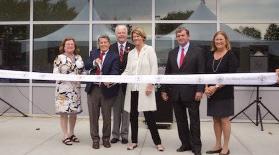
left to right: Kaari Stannard P’20, ’23, Trustee, Karen Ricci P’17, ’20, and Tracey McRoberts P’14, ’20 , left to right: Left to right Board President Nancy Carey Cassidy P’13, ’15, Former Head of School Douglas North ’58, Margi and Michael Picotte ’65 and Campaign Co-chairs Bruce DiStefano ’70 and Sarah Elmendorf ’70, P’06, ’08, ’10 cut the ribbon at the opening of the Michael B. Picotte Field House.
Scholarship Donor Joan Dembinski ’55 attends the Scholar Luncheon with her student recipient Ma Nyunt Aye and family.
Scholarships & Endowment

The Academies’ endowment now stands at $20 Million.
During this campaign, we have established 15 new scholarships, thanks to the generosity of many donors, and increased endowment with many new gifts. Endowment brings stability to keep up with best practices in education over the long haul. The more we can increase The Albany Academies’ endowment and scholarships, the more effectively we can continue to attract the best and brightest students, the highest quality faculty, and pursue new and innovative opportunities to meet the needs of the future.
James E. Poole Athletic Facility
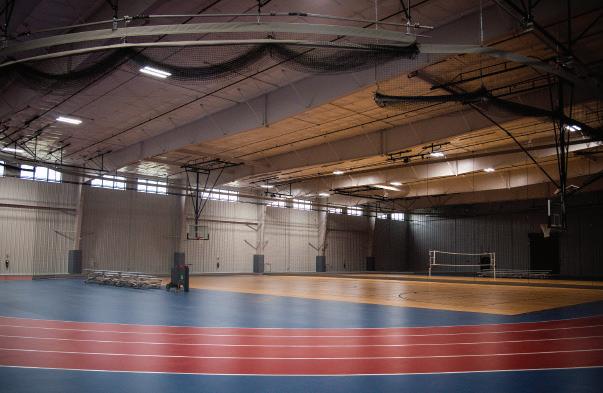
November 14, 2019 was a special day at the Academies
that attracted a lot of media attention! The ribbon cutting for the highly anticipated opening of the James E. Poole Athletic Facility was held. The building was named in honor of Coach Poole and his more than 40 years of dedicated service to the Academies as a coach, faculty member, and mentor. It was also a moment to thank all of our donors, particularly lead donor Mila and Tom Tuttle ’83—who helped make this project
left to right: Kaari Stannard P’20, ’23, Trustee, Karen Ricci P’17, ’20, and Tracey McRoberts P’14, ’20 , Left to right Head of School Chris Lauricella P’20, ’22, Michael Hayes ’83, P’18, ’20, ’23, ’27, Tom Tuttle ’84, Michael McCauley ’24, James Poole II ’68, P’02, ’14, Nancy Carey Cassidy P’13, ’15 and James and Susan Hens share in the special moment of the opening of new athletic facility.
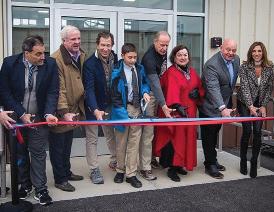
possible. The 33,000 square foot athletic building is a great space for student-athletes that allows a variety of practices to be held simultaneously and now can also serve as classroom space if needed for our students.
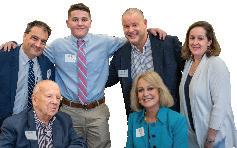
Scholarship Donors Cynthia and James Caird ’52 spend time with their student recipient Michael Grandinetti ’19 and his parents, Daniel and Karen, at the 2019 Scholar Luncheon.
Auditorium
On May 17, 2014, The Albany Academies’ community came together to celebrate its Bicentennial and the Campaign for the
Third Century at a special concert held in the Auditorium at Albany Academy for Girls featuring James Taylor, Kim Hessberg Taylor ’71, and Friends. Proceeds from the event—attended by over 300 parents, alumni, alumnae, and friends —benefited the renovation of the Auditorium, one of the Campaign projects. Thank you to Kim and James Taylor—along with a special gift from Ilene and Chip Stein P’05, ’05, Heather Stein Kruse ’05 and Corey Kruse, and Jodi Stein Emmott ’05 and Peter Emmott—for their generosity.
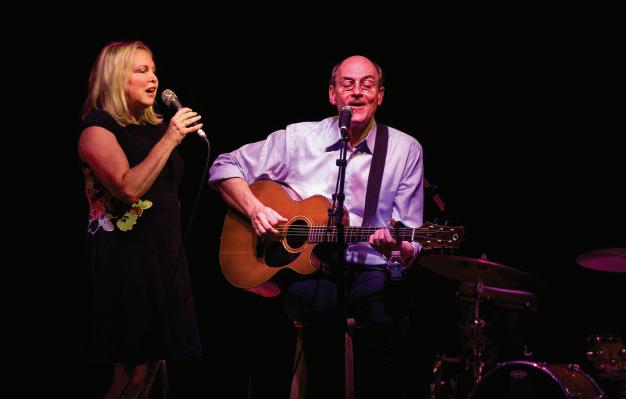
James Taylor and Kim Hessberg Taylor ’71 perform in the Auditorium at AAG in honor of its Bicentennial.
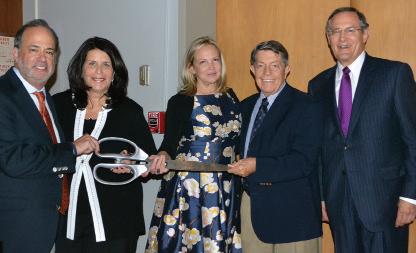
Left to right Chip and Ilene Stein P’05, ’05, Kim Taylor ’71, Douglas North and E. Stewart Jones cut the ribbon of the newly renovated Auditorium.

Thank You!
Schellenberger Alumni/ae Center

The renovation of the Alumni/ae Center was made possible by the generosity of a major gift
from Gabrielle Schellenberger, the beloved spouse of the late Herbert H. Schellenberger, a faculty member at The Albany Academy from 1958-1977. The Schellenberger Alumni/ae Center is now home to the Institutional Advancement team and serves as a space for alumni, alumnae, parents, and the professional community to gather, hold receptions, and conduct meetings. A formal ribbon cutting ceremony was held in the fall of 2014.
Left to right Past Board of Trustees President E. Stewart Jones Jr. ’59, P’90, ’93, ’97, Former Alumnae Association President Rosemary Walsh ’77, P’07, ’09, ’10, ’13, Former Alumni Association President Marcus Q. Pryor ’87, P’15 and Douglas North ’58 at the ribbon cutting ceremony.

“We are all so grateful to the many individuals who supported our Campaign for the Third Century and particularly to co-chairs Bruce DiStefano ’70 and Sarah Elmendorf ’70 P’06, ’08, ’10 for their vision and leadership. The new and renovated spaces have been transformative to our campus and the newly Thank You! endowed scholarships have provided opportunities to many deserving students who would otherwise not be able to attend the Academies.” — Ann Wendth, Chief Advancement Officer





